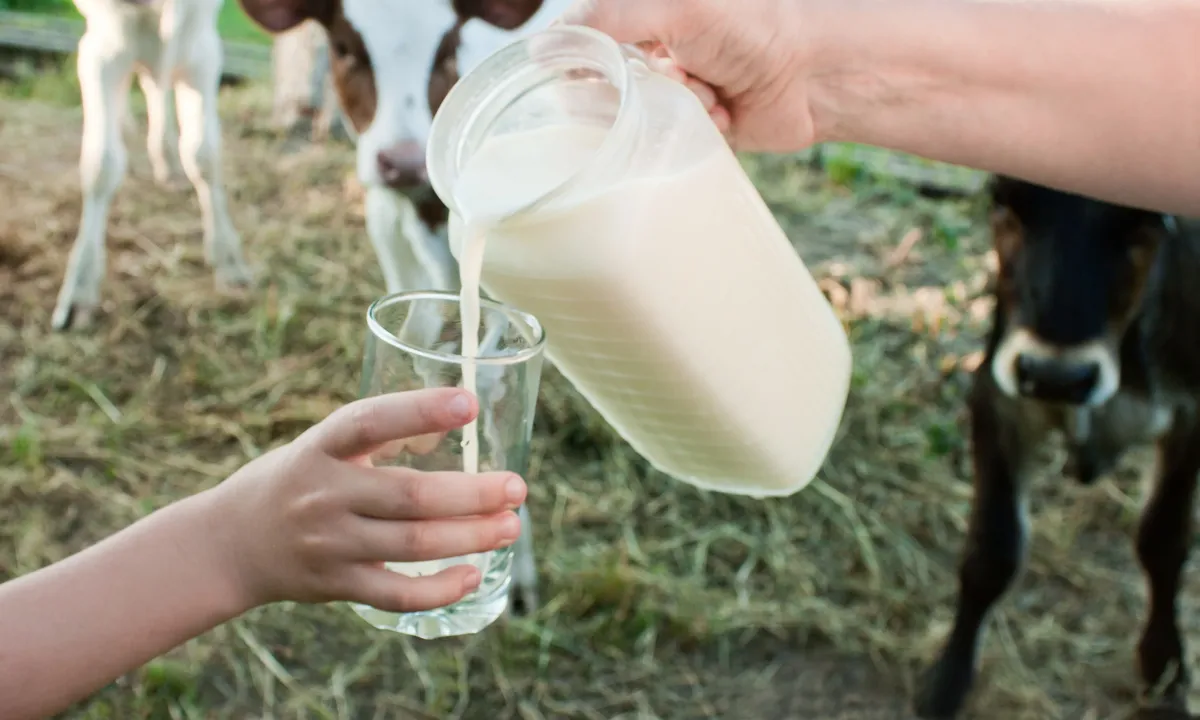
The Food and Drug Administration (FDA) has recently identified the presence of H5N1 bird flu in raw milk samples collected from various states across the United States. This alarming discovery highlights a significant health risk associated with consuming raw milk, a product that many Americans, particularly parents, may not fully understand. The dangers become even more pronounced for children, who are at a higher risk of serious health complications from consuming unpasteurized dairy products.
Raw milk can harbor a range of harmful bacteria, including Salmonella, E. coli, Campylobacter, Cryptosporidium, Listeria, and Brucella. According to a recent survey by the Annenberg Public Policy Center (APPC), more than half of U.S. adults—approximately 56 percent—acknowledge that raw milk is less safe than its pasteurized counterpart. However, a concerning number of people remain uncertain about the safety differences: around 25 percent are unsure, while 12 percent mistakenly believe that raw milk is as safe as pasteurized milk. Alarmingly, 6 percent even think that raw milk is safer than pasteurized options.
A particularly troubling finding from the APPC survey indicates that two-thirds of respondents, about 66 percent, are unaware that children are more vulnerable to the risks of consuming raw milk. This lack of awareness can lead to severe health consequences. Patrick E. Jamieson, director of the Annenberg Health and Risk Communication Institute, emphasizes the importance of pasteurization: “Consuming raw milk and raw milk products can make you sick, and pasteurization reduces the risk of milk-borne illness. Always look for the pasteurization label before purchasing or consuming milk and dairy products.”
As of March 10, 2025, the Centers for Disease Control and Prevention (CDC) has reported 70 confirmed cases of H5 bird flu across 13 states, primarily linked to contact with infected poultry or dairy herds. Tragically, there has been one fatality in Louisiana, although there is currently no evidence of human-to-human transmission of the virus. Since January 2022, the bird flu has impacted nearly a thousand dairy herds in 17 states and has infected over 166 million poultry and wild birds. Global statistics from the World Health Organization (WHO) indicate there were 954 cases of human avian flu infections between 2003 and December 2024, resulting in 464 deaths.
Many U.S. adults are unaware that bird flu has only been detected in raw milk, with only 17 percent recognizing this fact. A staggering 68 percent are uncertain, and some erroneously believe that bird flu has been found in both pasteurized and raw milk. Scientific studies have demonstrated that mice can contract bird flu by drinking raw milk, raising concerns about potential human transmission. Although the FDA has yet to confirm whether H5N1 can spread to humans through raw milk, research suggests there may be a risk. The National Institutes of Health warns that untreated milk containing the virus could pose a threat to consumers.
The APPC survey results reveal that 22 percent of Americans believe that drinking raw milk increases the risk of contracting bird flu, while another 22 percent think it has no effect. A significant 53 percent remain unsure. The FDA underscores that pasteurization effectively eliminates harmful bacteria and viruses, including H5N1, when present. However, misinformation continues to shape public opinion regarding the safety of raw milk.
Despite overwhelming scientific evidence, advocates of raw milk persist in promoting its supposed health benefits. The APPC survey explored several of these beliefs and found widespread uncertainty among Americans regarding their accuracy. For instance, 26 percent believe raw milk is as effective as pasteurized milk in preventing osteoporosis, while 10 percent mistakenly think it is more effective. Additionally, 40 percent recognize that raw milk does not cure lactose intolerance, but 10 percent incorrectly believe it does. The survey also found that 39 percent correctly identified that raw milk does not alleviate asthma symptoms, while 54 percent remain unsure. Importantly, the FDA has consistently refuted these claims, asserting that raw milk poses serious health risks and does not offer superior health benefits.
Since 1987, the FDA has prohibited the interstate sale of raw milk, yet 30 states allow some form of legal sale. Public opinion regarding these regulations is mixed. Approximately 24 percent of survey respondents support allowing raw milk sales across state lines, while 28 percent oppose it. Opinions on in-state sales are similarly divided, with 24 percent favoring unrestricted sales and 25 percent advocating for limitations to farm owners selling directly from their land. Fourteen percent believe raw milk sales should be entirely banned in their states. Debate continues around federal regulations, with 32 percent of respondents viewing these rules as unnecessary government intervention, while 34 percent disagree.
More than half of Americans, about 56 percent, do not believe that state laws requiring warning labels on raw milk containers infringe upon sellers’ constitutional rights. While 14 percent think they do, 30 percent are unsure. Additionally, many Americans lack awareness regarding the extent of bird flu testing in raw milk. When asked about the number of states participating in USDA testing, a significant 74 percent of survey respondents were unsure. As of January 8, 2025, the USDA reports that its National Milk Testing Strategy involves 28 states, which account for nearly 65 percent of the nation’s milk production.
Raw milk poses significant health risks, including exposure to dangerous bacteria and potential transmission of bird flu. Many Americans remain uninformed or misinformed about these dangers. Scientific research consistently indicates that pasteurization is the safest method to ensure milk safety. Public health organizations continue to advocate for the consumption of pasteurized milk to protect all consumers, particularly vulnerable populations like children.
—– Like what you read? Subscribe to our newsletter for engaging articles, exclusive content, and the latest updates. Check us out on EarthSnap, a free app brought to you by Eric Ralls and Earth.com. —–